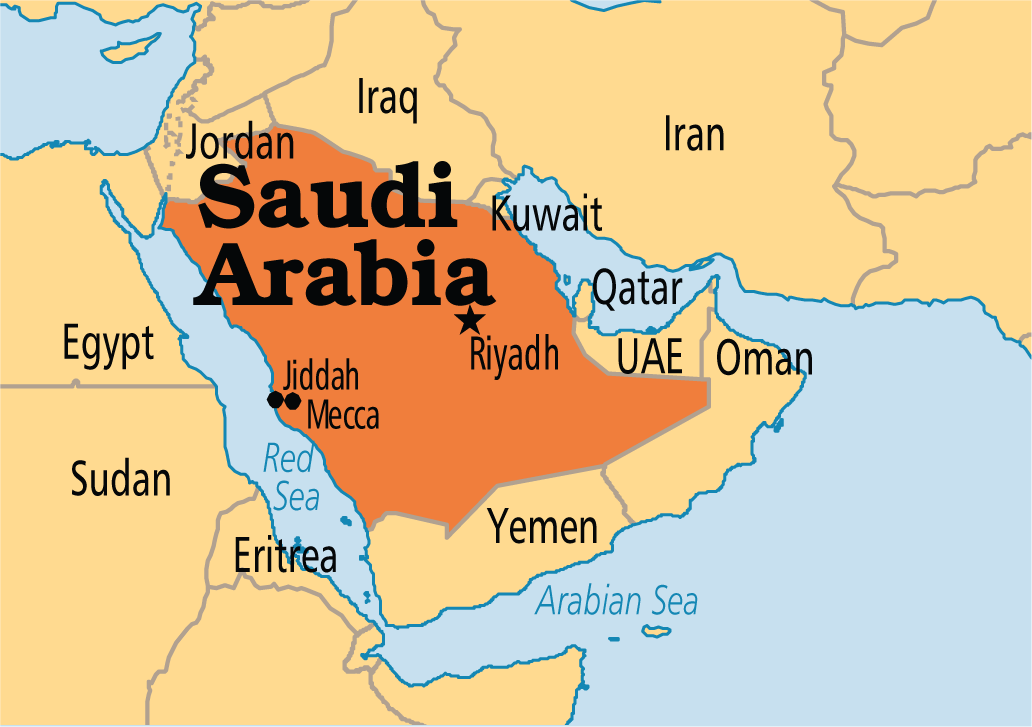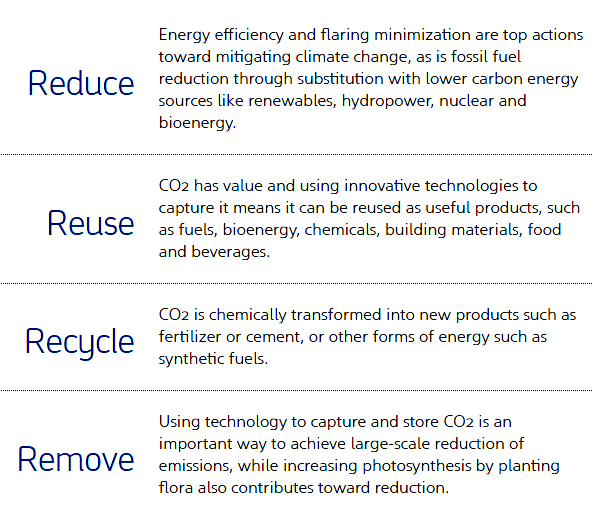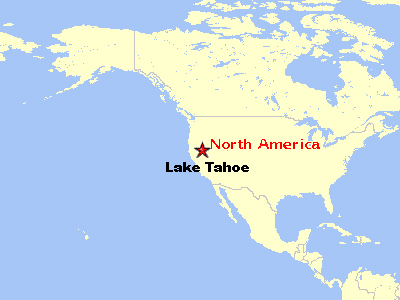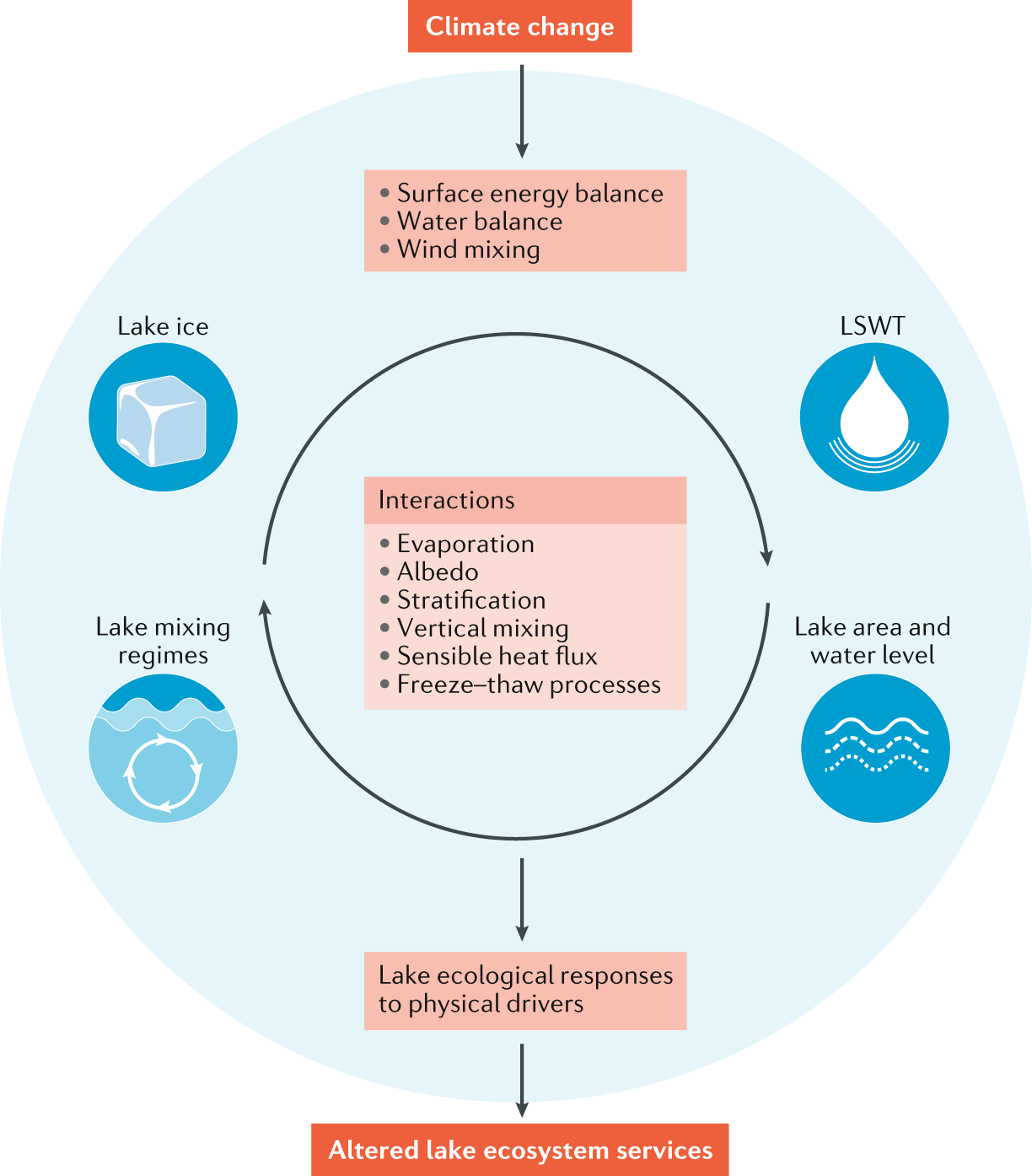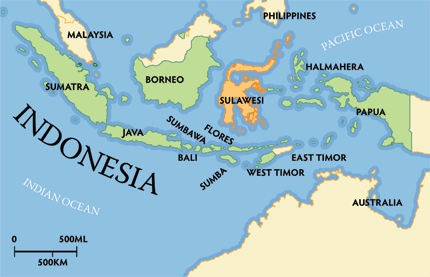Economics of Climate Change
Why in News
The COP26 climate talks are going to take place in Glasgow. Given the magnitude of climate change phenomena occurring all over the world, the upcoming climate deal negotiation is crucial to cap global warming at the 1.5-2 degrees Celsius upper limit set out in the 2015 Paris Agreement.
- In this context, it is necessary to analyze the impact of climate change on economic livelihoods in the world over and the future stability of the global financial system.
Key Points
- Climate Change Cost: Although there is disagreement on the magnitude, several economists are certain about the possible impact of global warming on global output.
- According to one International Monetary Fund (IMF) estimate, unchecked global warming would reduce 7% of world output by 2100.
- The Network for Greening the Financial System (NFGS) group of world central banks puts it even higher at 13%.
- Most Vulnerable Area: It is unanimously accepted that the developing world will be the worst affected area by climate change.
- Presently, much of the world’s poor live in the tropical or low-lying regions already suffering climate change fall-out like droughts or rising sea levels.
- Moreover their countries rarely have the resources to mitigate such damage.
- Impact on Micro-Level: Climate change will drive up to 132 million more people into extreme poverty by 2030, a World Bank paper last year concluded.
- Factors included lost farming income; lower outdoor labour productivity; rising food prices; increased disease; and economic losses from extreme weather.
- Analysing Net Zero Emission Scenario: ‘Net zero emissions’ refers to achieving an overall balance between greenhouse gas emissions produced and greenhouse gas emissions taken out of the atmosphere.
- However, there are several economic repercussions owing to Net Zero emissions.
- A report by think tank Carbon Tracker estimated that over USD 1 trillion of business-as-usual investment by the oil and gas sector would no longer be viable in a genuinely low-carbon world.
- Moreover, the IMF has called for the end of all fossil fuel subsidies – which it calculates at $5 trillion annually if defined to include undercharging for supply, environmental and health costs.
- This may lead to an unemployment crisis of mass level.
- Below Par Carbon Pricing: Tax or permit schemes that try to price in the damage done by emissions create incentives to go green.
- However, so far only a fifth of global carbon emissions are covered by such programmes, pricing carbon on average at a mere USD 3 a tonne.
- This is well below the USD 75/tonne the IMF says is needed to cap global warming at well below 2°C.
- Risk of Inflation: Anything which factors in the polluting cost of fossil fuels is likely to lead to price rises in some sectors.
- Failure of Green Decoupling: Sustainable growth implies that economic activity can grow as needed without adding yet more emissions.
- However, this has failed to manifest uptil now.
- Presently, higher rates of economic growth are achieved but it is accompanied by gains in emissions or achieved by shifting dirty production from one national territory to another.
- Inadequate Green Finance: At a global scale, the rich countries which since their industrial revolutions have generated the bulk of emissions have promised to help developing countries transition via USD 100 billion of annual transfers – a promise so far not fulfilled.
Way Forward
- Covering Up Economic Risk of Net Zero Emissions: The global financial system needs to be insulated against both the physical risks of climate change itself and the upheavals likely to happen during a transition to net zero.
- Central banks and national treasuries should form a combined strategy to balance economic growth with sustainable development.
- A vital step should be explicitly including policies for climate mitigation in the government budget, along with energy, roads, health and education.
- Switching to Hydrogen Economy: Power generation by green hydrogen will be a viable solution to achieve the target of ‘net-zero’ emission to remain under 1.5° C.
- It will also be a leap forward in minimising the dependence on conventional fossil fuels.
- Mobilising Climate Finance: There is also a need to launch a major campaign to mobilise climate finance and focus should be given on energy efficiency, use of biofuels, carbon sequestration, carbon pricing.
Net Zero Target of Saudi Arabia
Why in News
Recently, Saudi Arabia, one of the world’s largest oil producers, announced that it will reach “net zero” greenhouse gas emissions by 2060.
- The announcement came at the start of the kingdom’s first-ever Saudi Green Initiative (SGI) Forum. SGI aims to raise the vegetation cover, reduce carbon emissions, combat pollution and land degradation, and preserve marine life.
Key Points
- Saudi Arabia’s Target:
- Aims to reach zero-net emissions by 2060 under its circular carbon economy programme while maintaining its leading role in strengthening security and stability of global oil markets.
- That approach focuses on still unreliable carbon capture and storage technologies over efforts to actually reduce global reliance on fossil fuels.
- It would join a global initiative on slashing emissions of methane by 30% from 2020 levels by 2030, which both the United States and the European Union (EU) have been pressing (Global Methane Pledge).
- Aims to reach zero-net emissions by 2060 under its circular carbon economy programme while maintaining its leading role in strengthening security and stability of global oil markets.
- Net Zero Target:
- About:
- Net-zero, also means carbon neutrality, is a state in which a country’s emissions are compensated by absorption and removal of greenhouse gases from the atmosphere.
- It does not mean that a country would bring down its emissions to zero. That would be gross-zero, which means reaching a state where there are no emissions at all, a scenario hard to comprehend.
- Concerns:
- According to a recent report (Tightening the Net) by Oxfam International, announcing Net Zero Carbon Targets may be a dangerous distraction from the priority of cutting carbon emissions.
- Over 100 countries have set or are considering net-zero emissions or neutrality targets.
- According to a recent report (Tightening the Net) by Oxfam International, announcing Net Zero Carbon Targets may be a dangerous distraction from the priority of cutting carbon emissions.
- About:
- India’s Case:
- India is now the fourth-largest emitter after China, United States and the European Union, and as per IPCC’s Sixth Assessment Report, it will be among the most severely affected countries.
- India has committed to reducing the emission intensity of its Gross Domestic Product (GDP) by 33-35% by 2030 and having 175 gigawatt renewable energy capacity by 2030 under the Paris Agreement of 2016.
- India is not likely to follow the much-advocated net-zero plan but would rather dwell on improvising goals for the transition towards green energy.
- India believes in the principle of ‘common but differentiated responsibility’ , as per which the developed countries must take the first steps to reduce their emissions drastically. In addition, they should compensate the poorer countries by paying for the environmental damage due to their past emissions.
- According to a recent study by the think tank Council for Energy Environment and Water projects, for India to achieve the net zero target even by 2070, usage of coal, especially for power generation, will need to peak by 2040 and drop by 99% between 2040 and 2060.
Circular Carbon Economy
- A circular carbon economy is a framework for managing and reducing emissions. It is a closed loop system involving 4Rs: reduce, reuse, recycle, and remove.
Ayushman Bharat Health Infrastructure Mission
Why in News
Recently, the Prime Minister launched the Ayushman Bharat Health Infrastructure Mission.
Key Points
- About:
- It is one of the largest pan-India schemes for strengthening healthcare infrastructure across the country.
- It is in addition to the National Health Mission.
- It will provide support to 17,788 rural Health and Wellness Centres in 10 ‘high focus’ states and establish 11,024 urban Health and Wellness Centres across the country.
- Through this, critical care services will be available in all the districts of the country with more than five lakh population through exclusive critical care hospital blocks, while the remaining districts will be covered through referral services.
- Under the scheme, a national institution for one health, four new national institutes for virology, a regional research platform for WHO (World Health Organization) South East Asia Region, nine biosafety level-III laboratories, and five new regional national centres for disease control will be set up.
- It is one of the largest pan-India schemes for strengthening healthcare infrastructure across the country.
- Objectives:
- To ensure a robust public health infrastructure in both urban and rural areas, capable of responding to public health emergencies or disease outbreaks.
- To establish an IT-enabled disease surveillance system through a network of surveillance laboratories at block, district, regional and national levels.
- All the public health labs will be connected through the Integrated Health Information Portal, which will be expanded to all states and UTs.
- Significance:
- India has long been in need of an extensive healthcare system. A study (‘State of Democracy in South Asia (SDSA)–Round 3’) by Lokniti-CSDS in 2019 highlighted how access to public health care remained elusive to those living on the margins.
- The study found that 70% of the locations have public healthcare services. However, availability was less in rural areas (65%) compared to urban areas (87%).
- Schemes like Swachh Bharat Mission, Jal Jeevan Mission, Ujjwala, Poshan Abhiyan, Mission Indradhanush have saved crores of people from disease. More than 2 crore poor people got free treatment under Ayushman Bharat Yojana and many health related issues are being solved through Ayushman Bharat Digital Mission.
- India has long been in need of an extensive healthcare system. A study (‘State of Democracy in South Asia (SDSA)–Round 3’) by Lokniti-CSDS in 2019 highlighted how access to public health care remained elusive to those living on the margins.
- Other Related Initiatives:
National Steering Committee: NIPUN Bharat Mission
Why in News
Recently, a National Steering Committee (NSC) has been formed for the implementation of NIPUN Bharat Mission.
- NIPUN (National Initiative for Proficiency in Reading with Understanding and Numeracy) Bharat Scheme was launched earlier this year as part of the National Education Policy (NEP) 2020.
Key Points
- Roles and Responsibilities of NSC:
- To oversee the progress of the National Mission on Foundational Literacy and Numeracy and provide guidance on policy issues.
- To arrive at the target to be achieved nationally in 2026-27.
- To disseminate tools for measurement of yearly progress in the form of guidelines.
- To prepare and approve a National Action Plan (based on the State’s Action Plans).
- To review programmatic and financial norms periodically to ensure they are synchronised with targets to be achieved.
- NIPUN Bharat Mission:
- Objective:
- To create an enabling environment to ensure universal acquisition of foundational literacy and numeracy, so that every child achieves the desired learning competencies in reading, writing and numeracy by the end of Grade 3, by 2026-27.
- Focus Areas:
- It will focus on providing access and retaining children in foundational years of schooling; teacher capacity building; development of high quality and diversified Student and Teacher Resources/Learning Materials; and tracking the progress of each child in achieving learning outcomes.
- Implementation:
- NIPUN Bharat will be implemented by the Department of School Education and Literacy, Ministry of Education.
- A five-tier implementation mechanism will be set up at the National- State- District- Block- School level in all States and UTs, under the aegis of the centrally sponsored scheme of Samagra Shiksha.
- ‘Samagra Shiksha’ programme was launched subsuming three existing schemes: Sarva Shiksha Abhiyan (SSA), Rashtriya Madhyamik Shiksha Abhiyan (RMSA) and Teacher Education (TE).
- The aim of the scheme is to treat school education holistically, from pre-school to Class XII.
- A special package for Foundational Literacy and Numeracy (FLN) under NISHTHA (National Initiative for School Heads and Teachers Holistic Advancement) is being developed by NCERT.
- NISHTHA is a capacity building programme for "Improving Quality of School Education through Integrated Teacher Training".
- Stage-wise targets are being set in a continuum from the pre-primary or balvatika classes.
- Objective:
- Other Recent Initiatives:
- Samagra Shiksha Scheme 2.0, Vidyanjali portal, Indian Sign Language Dictionary, etc.
Fighting Drug Addiction
Why in News
Recently, the Social Justice and Empowerment Ministry has recommended that the National Fund to Control Drug Abuse should be used to carry out de-addiction programmes, rather than just policing activities.
- A proposal to decriminalise possession of small quantities of drugs, as defined in the Narcotic Drugs and Psychotropic Substances (NDPS) Act, 1985, had also been sent to the Department of Revenue under the Finance Ministry.
- Once it is approved, persons caught with small quantities of drugs for personal use can be directed to rehab, instead of being prosecuted and sent to jail.
Key Points
- National Fund to Control Drug:
- The fund was created in accordance with a provision of the NDPS Act and had a nominal corpus of Rs. 23 crore.
- Under the NDPS Act, the sale proceeds of any property forfeited, grants made by any person and institution, and income from the investments of the fund, go towards the fund.
- The Act states that the fund would be used to combat illicit trafficking of narcotics, rehabilitating addicts, and preventing drug abuse.
- Drug Addiction in India:
- The menace of drug addiction has spread fast among the youth of India.
- India is sandwiched between two largest Opium producing regions of the world that is the Golden triangle on one side and the Golden crescent on other.
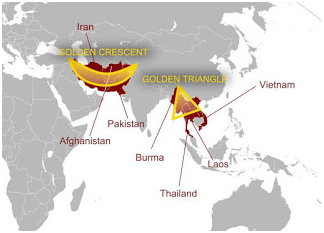
- The golden triangle area comprises Thailand, Myanmar, Vietnam and Laos.
- The golden crescent area includes Pakistan, Afghanistan and Iran.
- India is sandwiched between two largest Opium producing regions of the world that is the Golden triangle on one side and the Golden crescent on other.
- The menace of drug addiction has spread fast among the youth of India.
-
- According to the World Drug Report 2021, prescription drugs and their ingredients or 'precursors' are being increasingly diverted for recreational use in India--the largest manufacturer of generic drugs in the world.
- India is also linked to shipment of drugs sold on the 19 major darknet markets analysed over 2011-2020.
- According to the National Crime Records Bureau’s Crime in India 2020 report, a total of 59,806 cases were lodged under NDPS Act.
- According to the Social Justice Ministry and All India Institute of Medical Sciences (AIIMS) report on magnitude of substance use in 2019, there were:
- 3.1 crore cannabis users (of which 25 lakh were dependent users).
- 2.3 crore opioid users (of which 28 lakh were dependent users).
- According to the World Drug Report 2021, prescription drugs and their ingredients or 'precursors' are being increasingly diverted for recreational use in India--the largest manufacturer of generic drugs in the world.
- Other Related Initiatives:
- Narco-Coordination Centre: The Narco-Coordination Centre (NCORD) was constituted in November, 2016 and the scheme of “Financial Assistance to States for Narcotics Control” was revived.
- Seizure Information Management System: Narcotics Control Bureau has been provided funds for developing a new software i.e. Seizure Information Management System (SIMS) which will create a complete online database of drug offences and offenders.
- National Drug Abuse Survey: The government is also conducting a National Drug Abuse Survey to measure trends of drug abuse in India through the Ministry of Social Justice & Empowerment with the help of National Drug Dependence Treatment Centre of AIIMS.
- Project Sunrise: It was launched by the Ministry of Health and Family Welfare in 2016, to tackle the rising HIV prevalence in north-eastern states in India, especially among people injecting drugs.
- NDPS Act: It prohibits a person from producing, possessing, selling, purchasing, transporting, storing, and/or consuming any narcotic drug or psychotropic substance.
- The NDPS Act has since been amended thrice – in 1988, 2001 and 2014.
- The Act extends to the whole of India and it applies also to all Indian citizens outside India and to all persons on ships and aircraft registered in India.
- Nasha Mukt Bharat: Government has also announced the launch of the ‘Nasha Mukt Bharat’, or Drug-Free India Campaign which focuses on community outreach programs.
- International Treaties and Conventions to Combat Drug Menace:
- India is signatory of the following International treaties and conventions to combat the menace of Drug Abuse:
- United Nations (UN) Convention on Narcotic Drugs (1961)
- UN Convention on Psychotropic Substances (1971).
- UN Convention against Illicit Traffic in Narcotic Drugs and Psychotropic Substances (1988)
- UN Convention against Transnational Organized Crime (UNTOC) 2000.
- India is signatory of the following International treaties and conventions to combat the menace of Drug Abuse:
Way Forward
- The stigma associated with drug taking needs to be reduced. Society needs to understand that drug-addicts are victims and not criminals.
- Certain crop drugs which have more than 50% alcohol and opioids need to be contained. Strict action is required from police officers and the excise and narcotics department to curb the problem of drug menace in the country.
- Radical political decisions like one of alcohol prohibition in Bihar may be another solution. When people do not exercise self-control, a state has to step in, as part of the Directive Principles of State Policy (Article 47).
- Education curriculum should include chapters on drug addiction, its impact and also on de-addiction. Proper Counselling is another alternative.
Liberal Regime for Insurance Businesses in GIFT City: IFSCA
Why in News
Recently, the International Financial Services Centre Authority (IFSCA) announced a new liberal regulatory regime for facilitating formation of various international and Indian insurance businesses in the Gujarat International Finance Tec-City (GIFT City).
- The regulations for setting up International Financial Services Centre (IFSC) Insurance Offices (IIOs) and IFSC Insurance Intermediaries Offices (IIIOs) were notified by the IFSCA earlier, in October 2021.
Key Points
- About:
- Entities that can set Insurance Businesses:
- Even non-insurance entities can incorporate public companies in IFSC and undertake insurance or reinsurance business.
- Insurance is a means of protection from financial loss. It is a form of risk management, primarily used to hedge against the risk of a contingent or uncertain loss.
- Reinsurance is the practice whereby insurers transfer portions of their risk portfolios to other parties by some form of agreement to reduce the likelihood of paying a large obligation resulting from an insurance claim.
- Similarly, Indian insurance companies can set up subsidiaries to undertake insurance or reinsurance business as IIO.
- Foreign intermediaries will also be allowed to set up IIOs alongside IRDAI (Insurance Regulatory and Development Authority of India) registered intermediaries like insurance brokers and corporate agents.
- Even non-insurance entities can incorporate public companies in IFSC and undertake insurance or reinsurance business.
- Paid Up Capital Requirement:
- In the case of a branch, a player doesn’t have to bring in any capital and with regard to subsidiaries, new insurance or reinsurance companies will require a paid-up capital (as per Insurance Act, 1938) of Rs 100 crore for insurance and Rs 200 crore for reinsurance.
- The new rules specify that no local\domestic capital will be required for foreign insurers or foreign reinsurers setting up IIOs as branches. The assigned capital of USD 1.5 million can be maintained in home jurisdictions.
- Further, there’s no local\domestic solvency (ability to pay one's debts) requirement for IIO in the IFSC.
- The assigned capital solvency margin will have to be maintained in the home jurisdiction.
- A solvency capital requirement is the total amount of funds that insurance and reinsurance companies are required to hold.
- Entities that can set Insurance Businesses:
- Significance:
- The new regulations have the potential of unlocking opportunities for global insurers and reinsurers.
- The regulatory framework is very friendly and addresses the aspirations and expectations of the players.
- The new facilities will help India to develop a global reinsurance hub in the country, competing with offshore financial centres like Singapore, Dubai and Hong Kong, which currently dominate the insurance business in Asia.
- The new regulations have the potential of unlocking opportunities for global insurers and reinsurers.
International Financial Services Centres Authority
- Establishment:
- It was established in April 2020 under the International Financial Services Centres Authority Act, 2019.
- It is headquartered at GIFT City, Gandhinagar in Gujarat.
- It was established in April 2020 under the International Financial Services Centres Authority Act, 2019.
- Functions:
- The Authority shall regulate all such financial services, financial products and Financial Institutions in an IFSC. It may also recommend to the Central Government such other financial products, financial services and financial institutions which may be permitted in the IFSCs.
- Powers:
- All powers exercisable by the respective financial sector regulatory (viz. Reserve Bank of India, Securities and Exchange Board of India, IRDAI, and Pension Fund and Regulatory Development Authority etc.) under the respective Acts shall be solely exercised by the Authority in the IFSCs in so far as the regulation of financial products, financial services and FIs that are permitted in the IFSC are concerned.
- Processes and Procedures:
- The processes and procedures to be followed by the Authority shall be governed in accordance with the provisions of the respective Acts of Parliament of India applicable to such financial products, services or institutions, as the case may be.
- Grants by the Central Govt:
- The Central Govt. may, after due appropriation made by Parliament by law on this behalf, make to the Authority grants of such sums of money as the Central Government may think fit for being utilized for the purposes of the Authority.
- Transactions in Foreign Currency:
- The transactions of financial services in the IFSCs shall be done in the foreign currency as specified by the Authority in consultation with the Central Govt.
International Financial Services Centre
- An IFSC enables bringing back the financial services and transactions that are currently carried out in offshore financial centres by Indian corporate entities and overseas branches/subsidiaries of Financial Institutions (such as banks, insurance companies, etc.) to India.
- It offers a business and regulatory environment that is comparable to other leading international financial centres in the world like London and Singapore.
- IFSCs are intended to provide Indian corporates with easier access to global financial markets, and to complement and promote further development of financial markets in India.
Sustainable Transport System Award: Kerala
Why in News
Recently, Kerala has won the award for the ‘city with the most Sustainable Transport System’.
Key Points
- It will be presented by the Ministry for Housing and Urban Affairs.
- The award is given in recognition of the transport facilities in various states and Union Territories of India.
- The award has been given in recognition of the projects implemented — like Kochi Metro, Water Metro (Water Connectivity with the same experience as metro) and E-mobility — to enhance the transport facilities in the city of Kochi.
- The formation of the Kochi Open Mobility Network, which digitized and integrated various transport facilities, also helped to win the award.
Sustainable Transport
- About:
- It refers to any means of transportation that is 'green' and has low impact on the environment. It is also about balancing our current and future needs.
- Examples of sustainable transportation include walking, cycling, transit, carpooling, car sharing, and green vehicles.
- It refers to any means of transportation that is 'green' and has low impact on the environment. It is also about balancing our current and future needs.
- Benefits:
- Improves Air Quality:
- Replacing many separate emissions-producing vehicles with fewer transit vehicles that generally emit less pollution on a per person basis.
- Reduces Greenhouse Gas Emissions:
- By moving more people with fewer vehicles, public transportation can reduce greenhouse gas emissions. Public transportation produces significantly lower greenhouse gas emissions per passenger mile than private vehicle
- Reduces Congestion:
- Along with reducing greenhouse gas emissions by facilitating compact development, public transit also reduces congestion and traffic on the roads.
- By reducing congestion, transit reduces emissions from cars stuck in traffic.
- Promotes Health:
- Because sustainable transit reduces emissions and air pollution, it also promotes community health.
- Other sustainable modes of transportation, like biking and walking, also provide physical exercise to commuters while emitting zero emissions. This betters their health, as well as that of the entire community.
- Improves Air Quality:
E- Mobility
- Electromobility is the use of electric cars, as well as e-bikes or pedelecs, electric motorbikes, e-buses and e-trucks.
- The common feature of all of them is that they are fully or partly driven electrically, have a means of storing energy on board, and obtain their energy mainly from the power grid.
- E-mobility comes with zero or ultra-low tailpipe emissions of local air pollutants and much lower noise, and, by being one of the most innovative clusters for the automotive sector, can provide a major boost to the economic and industrial competitiveness, attracting investments, especially in countries.
Lake Tahoe: US
Why in News
Drought fueled by climate change has dropped Lake Tahoe in the US below its natural rim and halted flows into the Truckee River.
- It is an historically cyclical event that's occurring sooner and more often than it used to.
Key Points
- About:
- Lake Tahoe is the largest alpine lake in North America, and the second deepest lake in the US, with Crater Lake in Oregon being the deepest in the US.
- Alpine lakes are lakes or reservoirs at high altitudes, usually over above sea level or above the tree line.
- Lake Tahoe is the largest alpine lake in North America, and the second deepest lake in the US, with Crater Lake in Oregon being the deepest in the US.
Note: Great Lakes, chain of deep freshwater lakes in east-central North America comprising Lakes Superior, Michigan, Huron, Erie, and Ontario. Except for Lake Michigan, the lakes provide a natural border between Canada and the United States.
- Impact of Climate Change on Lakes:
- Less Ice Cover: Lakes are experiencing less ice cover, with more than 1,00,000 lakes at risk of having ice-free winters if air temperatures increase by 4 °C.
- Increasing LSWT: Lake Surface Water Temperatures have increased worldwide, which is similar to or in excess of air temperature trends.
- Increase in Evaporation rate: Global annual mean lake evaporation rates are forecast to increase 16% by 2100, with regional variations dependent on factors such as ice cover, stratification, wind speed and solar radiation.
- Lake stratification is the tendency of lakes to form separate and distinct thermal layers during warm weather.
- Affecting Lake Water Storage: Global lake water storage is sensitive to climate change, but with substantial regional variability, and the magnitude of future changes in lake water storage remains uncertain.
ABHYAS: High-speed Expendable Aerial Target
Why in News
Recently, The Defence Research and Development Organisation (DRDO) successfully flight-tested Abhyas High-speed Expendable Aerial Target (HEAT) from the Integrated Test Range in Chandipur, off the Bay of Bengal coast in Odisha.
- DRDO is the Research & Development wing of the Ministry of Defence, Govt of India, with a vision to empower India with cutting-edge defence technologies.
Key Points
- Designed and developed by:

- Aeronautical Development Establishment (ADE), of DRDO.
- ADE is a key Aeronautical Systems Design Laboratory under DRDO.
- It is involved in the design and development of the state-of-the-art Unmanned Aerial Vehicles (UAV) and Aeronautical Systems and technologies to meet the requirements of the Indian Armed forces.
- Aeronautical Development Establishment (ADE), of DRDO.
- Features
- It is powered by a gas turbine engine to sustain a long endurance flight at subsonic speed.
- It is equipped with a MEMS (Micro-Electro-Mechanical Systems)-based Inertial Navigation System (INS) for navigation along with the Flight Control Computer (FCC) for guidance and control.
- The vehicle is programmed for fully autonomous flight and their check-out is done using a laptop-based Ground Control Station (GCS).
- Utility:
- It will be used as a target for the evaluation of various missile systems.
- It offers a realistic threat scenario for practice of weapon systems.
- It will be used as a target for the evaluation of various missile systems.
- Other Recent Developments:
- In September 2021, the DRDO tested a new version of the Akash Missile – ‘Akash Prime’ – from the Integrated Test Range (ITR), Chandipur, Odisha.
- In July 2021, DRDO launched the Akash-NG (New Generation) and the Man Portable Anti Tank Guided Missile (MPATGM).
- In June 2021 a new generation nuclear capable ballistic missile Agni-P (Prime) was successfully test-fired by the DRDO.
- In February 2021 India also successfully test-fired indigenously-developed anti-tank guided missile systems ‘Helina’ and ‘Dhruvastra’.
- In October 2020, the DRDO conducted a successful flight test of the Supersonic Missile Assisted Release of Torpedo (SMART) from Wheeler Island off the coast of Odisha.
Trigonopterus Corona
Why in News
Recently, scientists have discovered a new species of beetle named Trigonopterus corona on the Indonesian island of Sulawesi.
- It is not the only insect species to be named after the pandemic. In April 2021, a new species of caddisfly (a moth-like insect) was collected near a stream in Kosovo, and named Potamophylax coronavirus.
Key Points
- It has been named on pandemic which reflects the large impact of the Covid-19 pandemic on this project.

- The researcher had been studying this genus (Trigonopterus) for the past 15 years and was delayed because Covid-19 pandemic hit.
- Trigonopterus is a hyperdiverse genus of flightless hidden-snout weevils (Cryptorhynchinae) ranging over the Indo-Australian-Melanesian archipelago.
- Weevils are often called flour bugs because that is where they are frequently found, they are a type of beetle with an elongated snout.
- The genus Trigonopterus originated in Northern Australia and rapidly diversified in New Guinea before colonizing Sulawesi and dispersing further west to Sundaland (a bio-geographical area of south-eastern Asia).
Island of sulawesi
- It is one of the four Greater Sunda Islands of Indonesia. It is a curiously shaped island with four distinct peninsulas that form three major gulfs, Tomini (the largest) on the northeast, Tolo on the east, and Bone on the south.
- The island group features the islands of Java, Sumatra, Borneo, and Sulawesi.
- The island is highly mountainous, with some active volcanoes, but there are large plains on the southern peninsula and in the south-central part of the island on which rice is grown.
- The highest peak is Mount Rantekombola, or Mario, at 11,335 feet.

